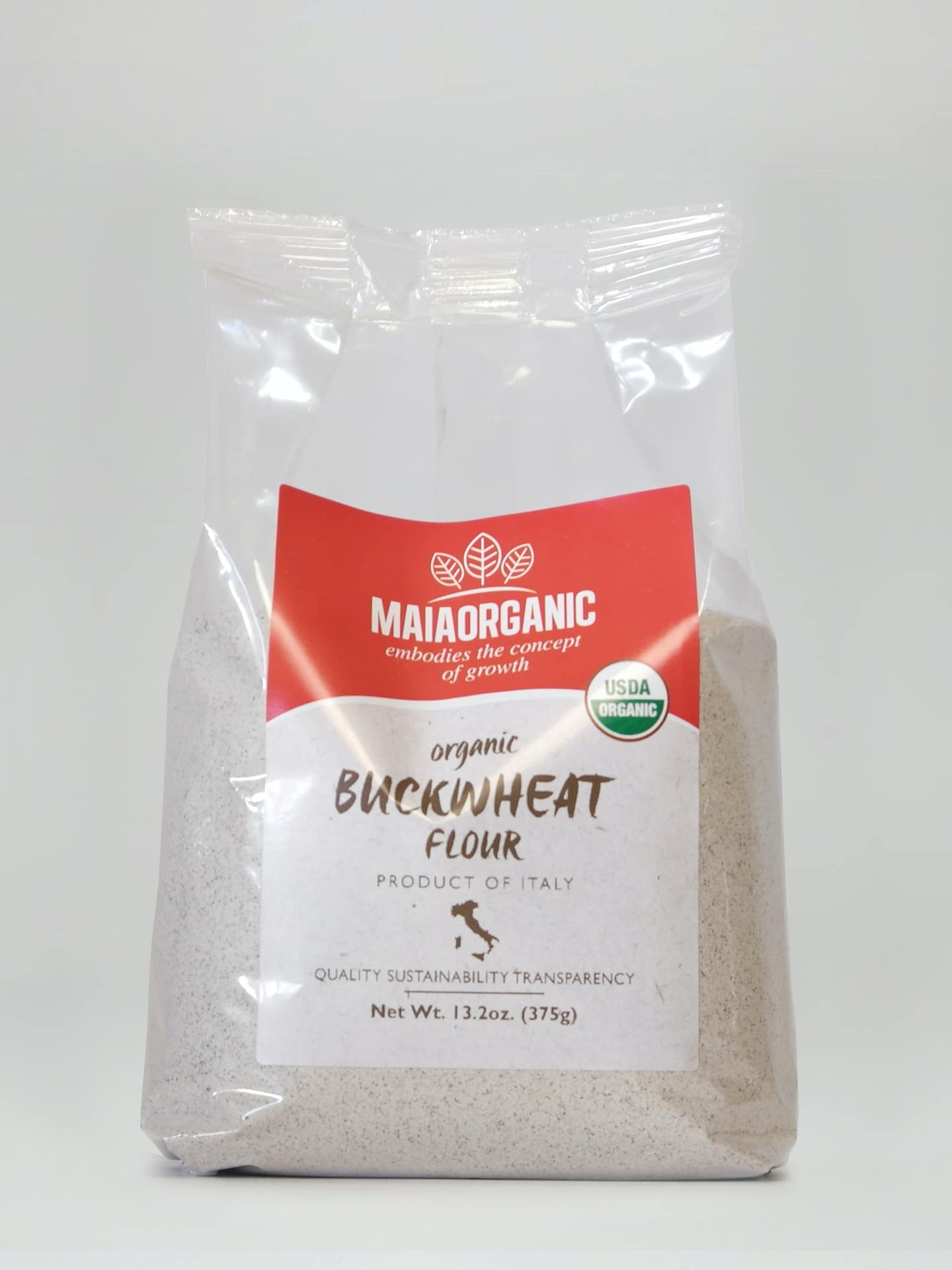Buckwheat – also called black wheat – has very ancient origins. Its cultivation begins in the areas of Siberia, Manchuria and China. Over time, buckwheat also began to be cultivated in Japan, India and Turkey. In Italy it landed in the 15th century, thanks to the “Saracens” – from which it originates the Italian name Grano Saraceno – and the maritime trade through the Black Sea, and only after the Middle Ages it acquired distribution and cultivation worthy of note also at European level.
A highly balanced food with a high satiety index, buckwheat is distinguished from common cereals by the high biological value of its proteins. Due to its nutritional properties, and its remarkable alimentary uses, buckwheat is often classified as a cereal, even if it does not belong to the Gramineae family. As a gluten-free aliment, buckwheat is easily digestible and perfect for those suffering from intolerances or celiac disease. A very low glycemic index and a high level of absorption that allows you to use all the nutrients of which it is composed also characterize it.
In the kitchen, Buckwheat flour is an excellent ingredient to thicken soups and preparing a tasty gluten-free polenta. Also, it is still widely used in traditional cuisine; in fact, it is included in many world recipes like the French galette, and the Italian gastronomy. For example, buckwheat is used in mountain cooking as a primary ingredient for the production of “polenta taragna”, “pizzoccheri valtellinesi” and “sciatt”, typical Valtellina sweets.

* Chefs Tips *
Buckwheat Flour
*Need some comfort food? Try a creamy dish of Buckwheat Gnocchi with Grana Padano & Black Pepper
*Longing for some French bites? Enjoy some Breton Buckwheat Galettes!
*Go 100% green and stay healthy by preparing some Gluten-free Vegan Cookies with Hazelnut!
*Missing Italian flavours? – Go for traditional Pizzoccheri alla Valtellinese!
Bread-lover looking for a Gluten-free solution? Bake some Walnut Bread!
*Still hungry? Have more here!
